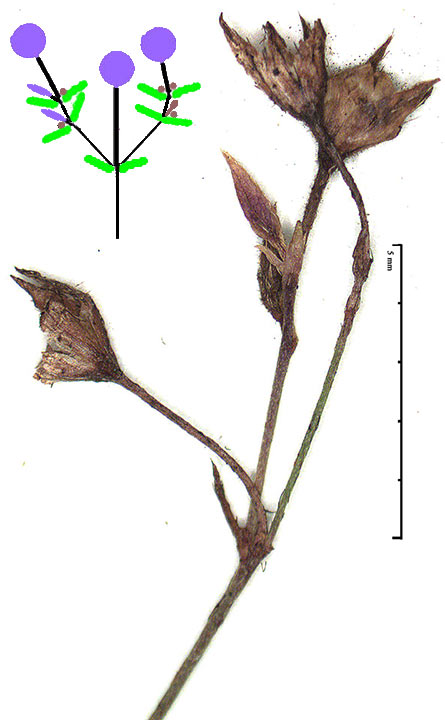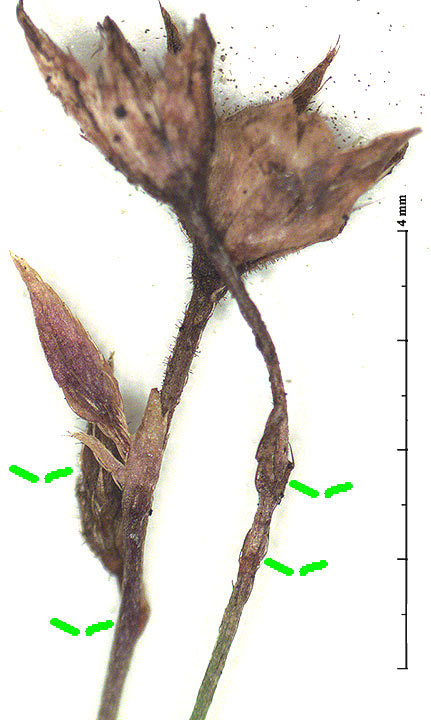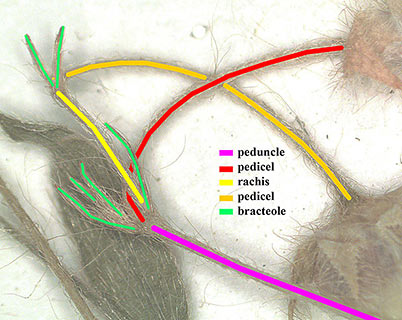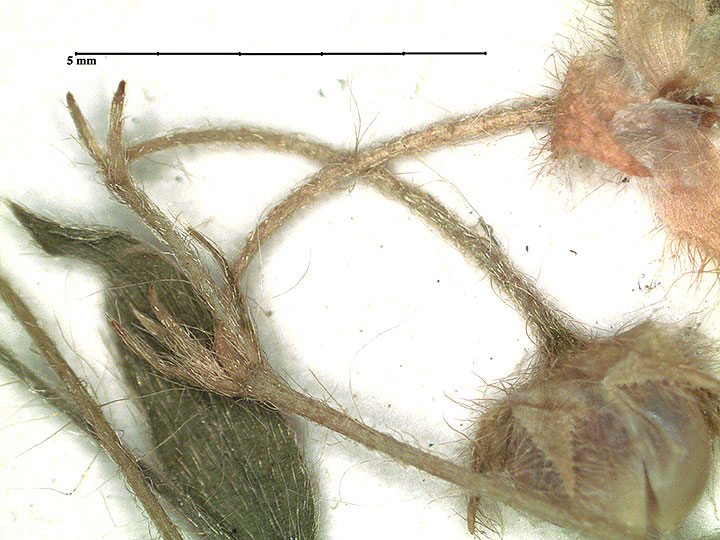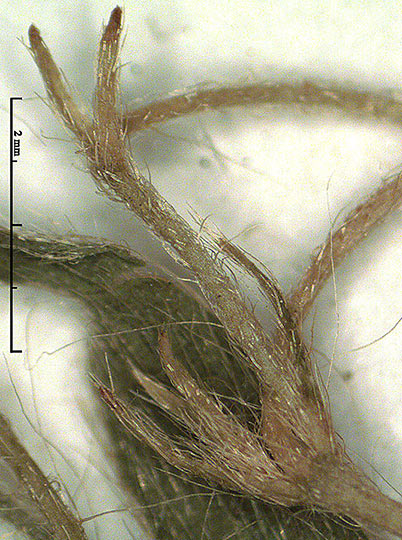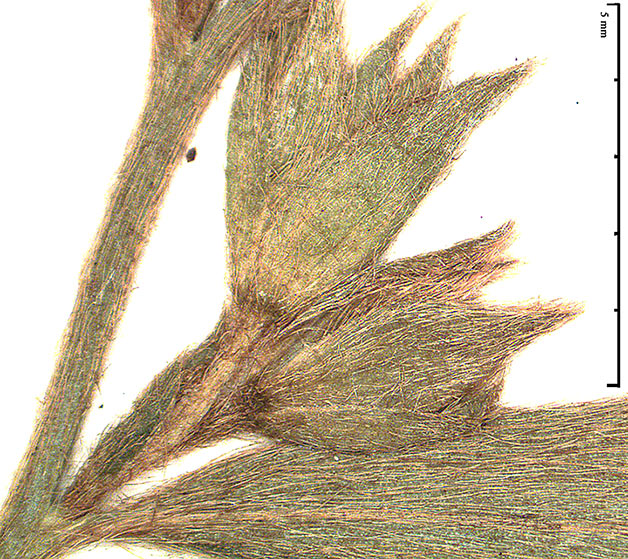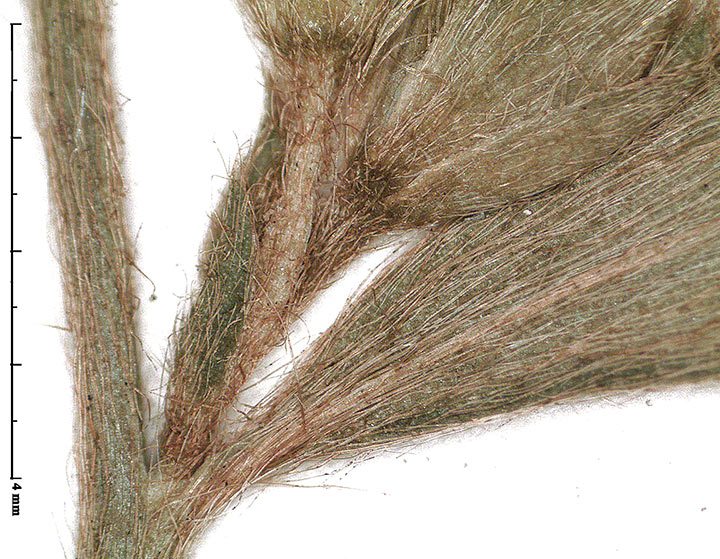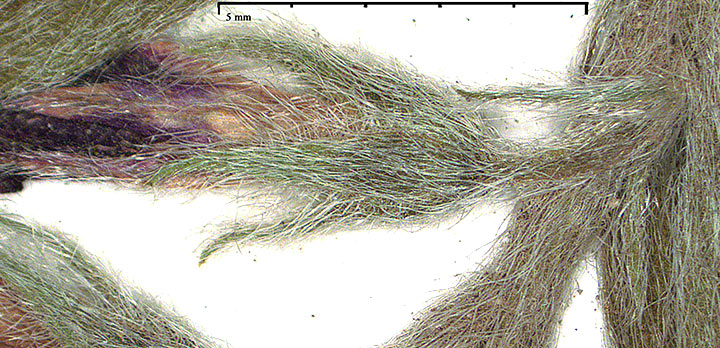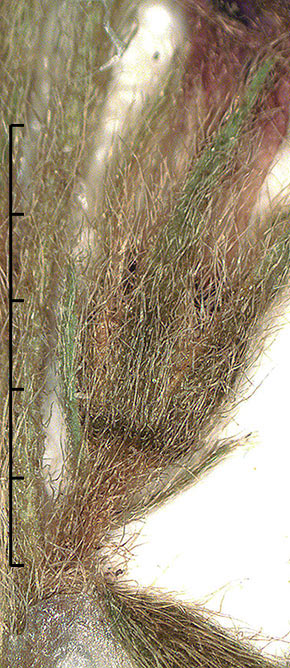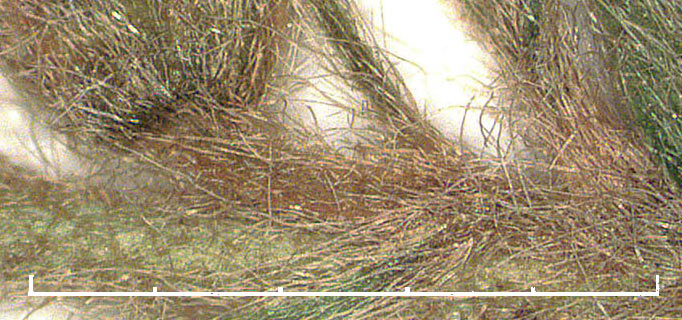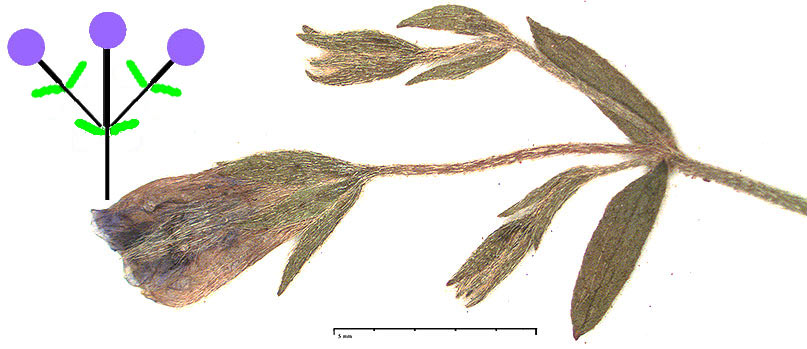
Dichasial cyme with E. arizonicus in Sonora. This seems to be a fairly common inflorescence with this taxon, although not as fully developed as this example. The bracteoles at the top of the peduncle are exceptionally large, but others on the same herbarium sheet are more normal size. (Click for enlargement.)
Evolvulus Inflorescence: Dichasial Cymes
by Bob Harms

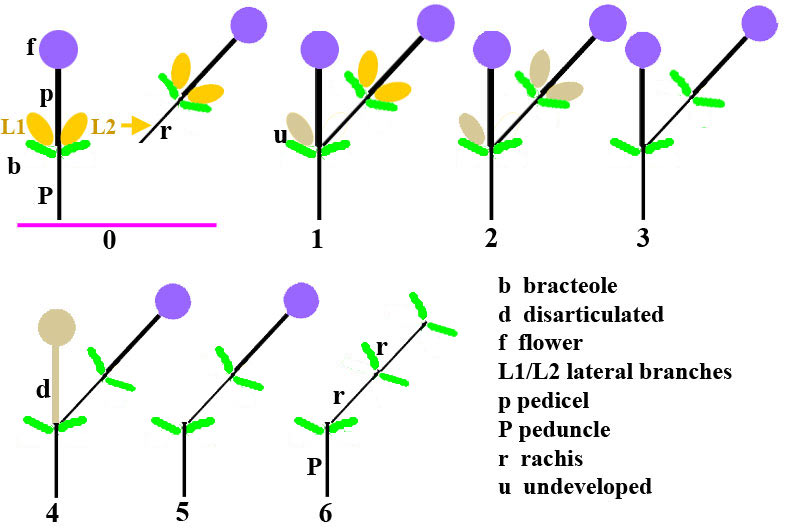
Dichasial cyme structures that may not seem to be dichasial & their development: 0. bases for cyme structures; 1. initial formation of a 2-flower cyme, the branch on the right has developed; that on the left has not; 2. neither new branch (now brown) has developed; 3. only bractioles and flowers remain; 4. the first flower dries and diarticulates with its pedicel; 5. only the second flower remains, but we know it's a second flower by virtue of the remaining rachis & bracteoles; 6. a ‘3-flower’ cyme, as determined by the remaining rachides & bracteoles. (See discussion of van Ooststroom's view below.)
S.J. van Ooststroom describes the Evolvulus inflorescence as [keyed to the above images]:
At the base of the pedicel of the terminal flower occur 2 bracteoles [b], each with a lateral branch in their axil [L1,L2]. In their turn these branches also bear terminal flowers and bracteoles [1], with or without developed flowers. The lateral branch or the lateral flower in the axil of bracteole β [L2] is often more strongly developed than that in the axil of bracteole α [L1]. If the lateral branches of the dichasium are not developed, then we get a peduncle, which is one-flowered [i.e., 0 on the left without L1/L2].
In effect the primary visible key to the cyme is its bracteole pairs.
N. American taxa with well developed dichasia (van Ooststroom's subsection Pedunculati)
Direct evidence for a dichasium, such as the with E. arizonicus (shown at the top), is also found among other taxa with well developed cymes; i.e., E. filipes, E. glaber, E. tenuis ssp. yucantanensis, & E. alsinoides. It must be noted that examples illustrating diachasial cymes, although not rare, are often difficult to find and will not be found with most herbarium collections. To some extent mounting practices may be to blame, since minute inflorescence structure seems to have merited little attention and is often hidden behind the subtending leaf or the flower.
The most strongly developed dichasia I have found are with the Mexican E. filipes, often with multiflowered cymes. A cyme with 3 flowers and two large buds is shown below. The bracteoles (green markers) are not all clearly visible. [Click for enlarged views.]
E. filipes dichasial structure (Veracruz)
An E. glaber dichasm is shown below. The terminal flower/pedicel come from the center of the larger bracteole pair. On one side is a rachis leading to smaller bracteoles and a bud; on the other side a bud with bracteoles has formed. [Click to enlarge.]
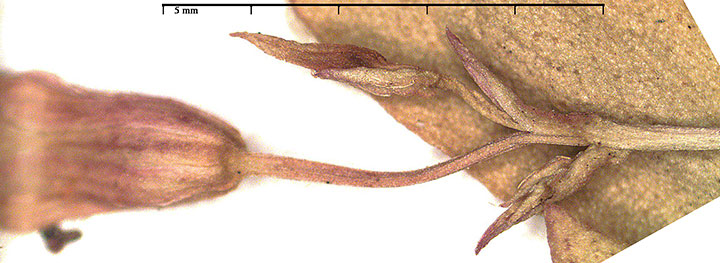
E. glaber dichasial structure (Yucatan)
Even at low resolution, such as at the JSTOR Global Plants site, the dichasial stucture is discernable; e.g., the Kew Royal Botanic Gardens sheet for E. tenuis ssp. yucantanensis (image copied and edited). Note that the structure is essentially the same as for E. glaber above, although both lateral branches have a visible rachis.

E. tenuis ssp. yucantanensis dichasial structure (Yucatan)
I have found a few examples with closely related E. alsinoides, although it is never as strongly presented as with closely related E. arizonicus (shown at the top of this page).
Illustrated below is an E. alsinoides (Presidio County) dichasial structure. 6 bracteole pairs originate from the peduncle apex: one for the dichasium with a terminal flower (red pedicel), one at the top of a lateral rachis (yellow) leading to a terminal flower (orange pedicel), and one pair (on the left) for which no development is apparent (either undeveloped or a disarticulated flower). [Click for enlargements.]
E. alsinoides dichasial structure (Presidio Co.)
Evidence for dichasia in in van Ooststroom's subsection Epedunculati
Taxa in this group for which van Ooststroom posits a potential for 2 flowers are E. hallierii, E. nummularius, E. ovatus, E. pohlii, & E. sericeus var. sericeus. To this I would add E. rotundifolius, for which van Ooststroom indicated only solitary flowers. A number of 2 (or more) flowers were found (with the exception of E. pohlii), but because of the mounting, pubescence, and the minimal peduncle no clear evidence for dichasial cyme structure, comparable to those shown above, was found.
One of the closest was with E. rotundifolius, shown below. The number of visible flowers is 3 (one still a bud), with 1 rachis and 1 apparent pedicel, and 2 visible bracteoles of different size. Without access to the nonvisible structure, nothing further is definite.
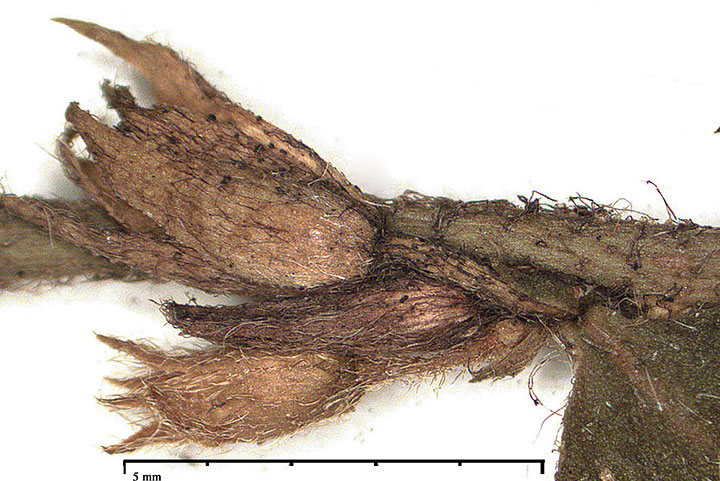
E. rotundifolius axial inflorescence (Tamaulipas) [Click to enlarge]
A second potential dichasial cyme was found with a British Honduras collection of E. nummularius. There appear to be 2 rachides arising from a common base, which may have lost the terminal flower (circular form, yellow arrow) and a bud arising from the bracteoles on the right. In general flower pairs were common with Mexican E. nummularius collections.
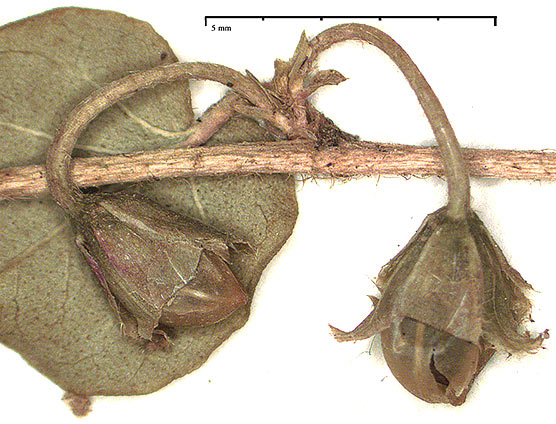
|
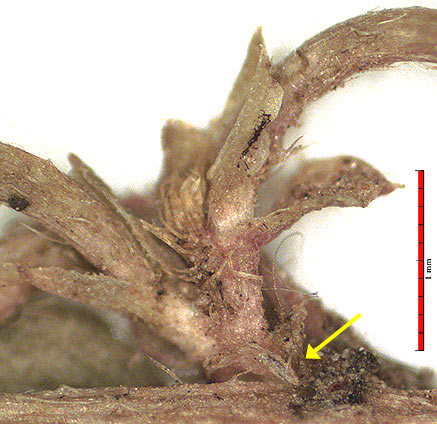
|
| E. nummularius inflorescence (British Honduras) [Click to enlarge] |
2 or 3 flower inflorescences were found for E. ovatus (with 3 flowers) & E. hallierii (with 2) by examining specimen scans at JSTOR Global Plants. The limited size of the scans and the mounting of E. ovatus prevented analysis of the cymes.
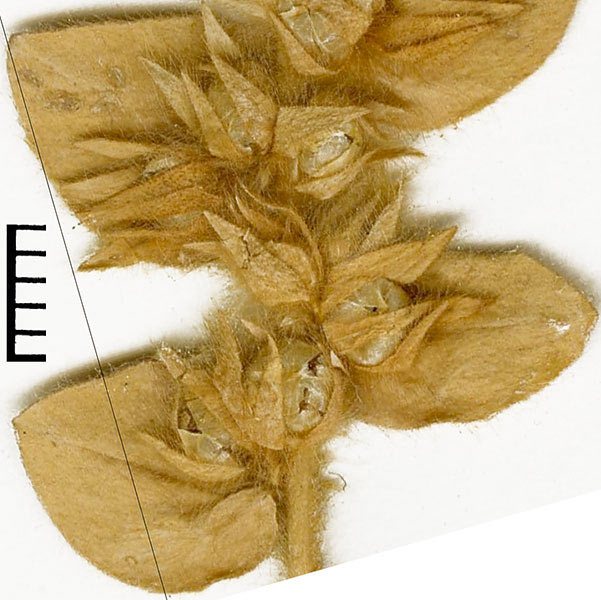 | 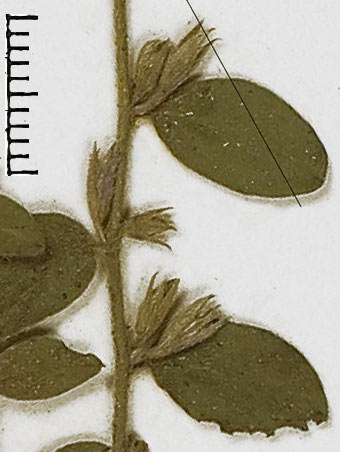 |
| E. ovatus, Mexico (US) | E. hallierii, Tamaulipas (GH) |
Among U.S. taxa only E. sericeus east of the Trans-Pecos is known to develop a cyme with more than one flower per leaf axil. However, a cyme structure is apparent — i.e., with rachides and lateral buds with bracteoles — only with the long–peduncled E. sericeus (van Ooststroom's forma pedunculatus) — the common form from Travis Co. south & southwest to the Devil's River.
And with this form a single lateral branch rarely flowers unless the initial terminal flower has failed to be fertilized; i.e., I have found only one instance of a flower on a lateral branch where the terminal flower had produced a fruit. A rare 3-flowered cyme for E. sericeus, with a freshly collected specimen, is shown below. Note that the rachis sections are just long enough to separate the 3 sets of bracteoles. (Compare type 6 above.) Only the paired bracteoles determine this as not a monochasial cyme.
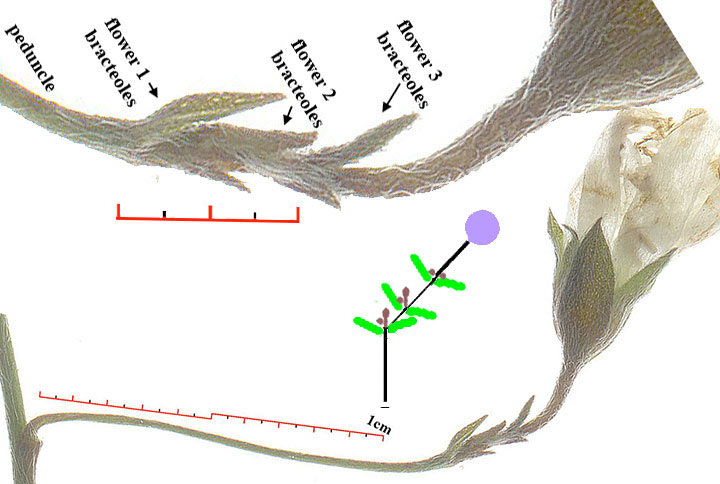
With fresh material one can often see where a pedicel+corolla (plus a bracteole) have disarticulated. This is clear in the following E. sericeus image (red arrow), and even though the lateral rachis is undeveloped one can also discern that the two visible bracteoles are not paired.
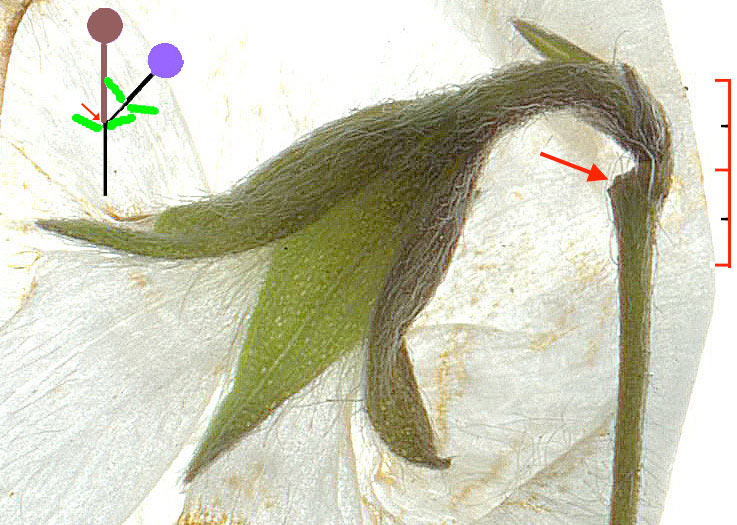
E. sericeus east of the Trans-Pecos also has cymes with minimal (0.2—1 mm) peduncles as well as multiple flowers, but they are rare. The following is from Williamson Co., with a peduncle less than 1 mm. Only one bracteole is clearly visible, and there is no apparent rachis on the second flower, but the two pedicels are clearly from just above the visible bracteole. [Click for enlargement.]
Taxa with inflorescences with solitary flowers
For a number of N. American epedunculate taxa van Ooststroom describes the inflorescence as "flowers solitary in the leaf axils" or "flowers axillary, solitary"; e.g., E. nuttallianus, E. sericeus var. discolor [common west of the above form], E. purpusii, E. rotundifolius (but see above for more flowers). To these can be added E. arenarius. With the exception of E. rotundifolius I found only solitary flowers in those collections I have been able to examine. Both peduncles and rachides are often so short as to be invisible or hidden by pubescence.
E. nuttallianus
The images below from a single Parker County collection are fairly typical for E. nuttallianus pedicel & peduncle lengths — left top: peduncle not visible, pedicel just under 3 mm; left bottom: peduncle ca. 1 mm, pedicel ±3 mm; right: both peduncle & pedicel < 1 mm.
E. nuttallianus inflorescences (Parker Co.) [Click to enlarge.]
Atypical is the long 5+ mm peduncle found from Taylor County, but the flower is solitary and there is no evidence of cyme development. [Click to enlarge.]
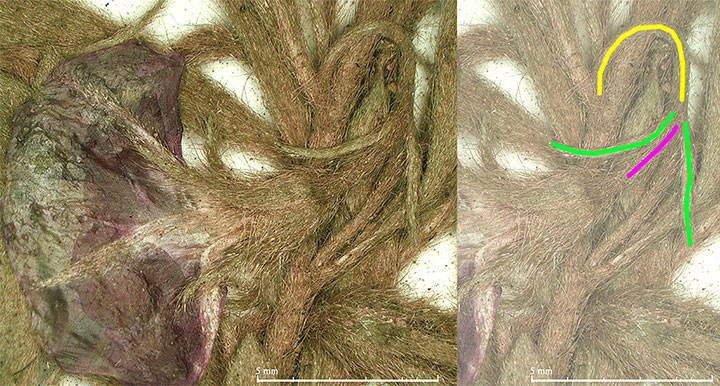
E. nuttallianus inflorescence with long peduncle (Taylor Co.)
[peduncle: yellow, pedicel: purple, bracteole: green]
The glabrous form of E. nuttallianus (Hays Co.) provides a better view of the peduncle/pedicel relationship. On the left, even with no hairs the complete inflorescence doesn't clearly show the extent of the peduncle. On the right, after disarticulation of the pedicel, the peduncle, bracteoles & point of pedicel attachment are manifest. Apart from the bracteole pair there seems to be no evidence of cyme development.
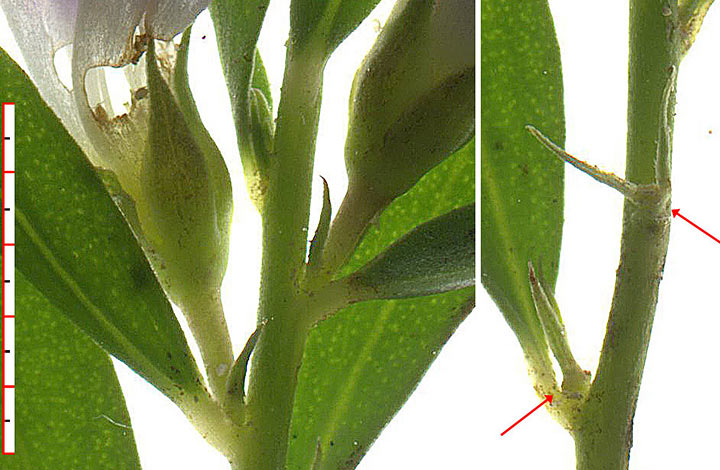
Glabrous form of E. nuttallianus (Hays Co.) [Click to enlarge.]
E. arenarius
E. arenarius is never found with longer peduncles or other indication of cyme formation. As seems typical with other Evolvulus taxa of the Trans-Pecos, the pedicel lengthens and becomes recurved in fruit.
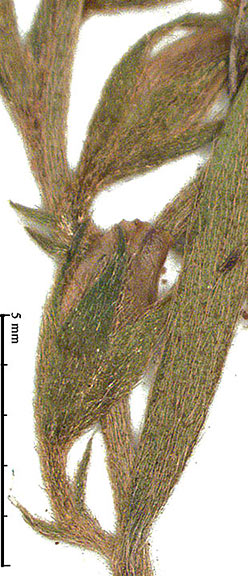 | 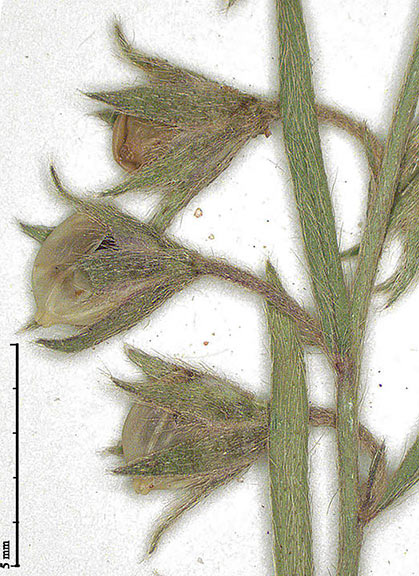 |
| E. arenarius (2 different collections from Roosevelt Co., NM) [Click to enlarge.] |
E. sericeus
The inflorescence structure of E. sericeus from the Trans-Pecos westward and in northern Mexico is essentially the same as for E. nuttallianus (with which it is often confused).
van Ooststroom recognizes two forms of variety discolor, the only N. American variety for which he specifies “flowers solitary” (p. 134):
-
“upper leaf surface glabrous”:
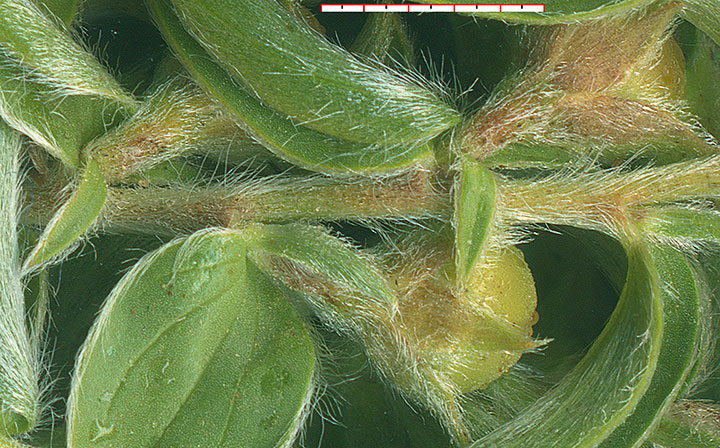
E. sericeus with very short peduncles (Jeff Davis Co.)
[Click to enlarge]
- “both surfaces of the leaves equally hairy“: This form included E. oreophilus Greene. Many keys determine this form to be E. nuttallianus.
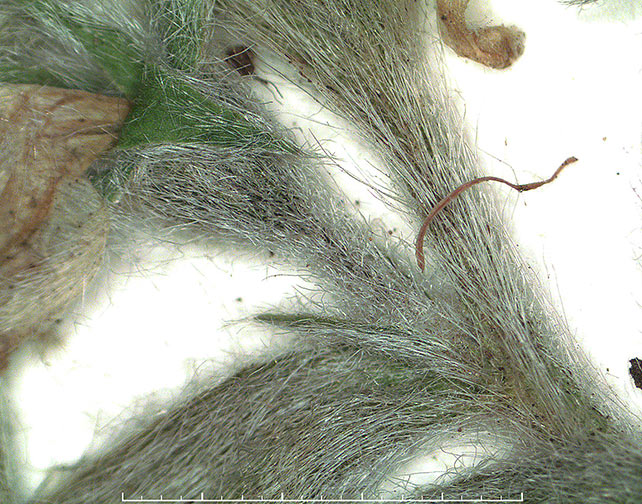
E. sericeus with very short peduncles (Jeff Davis Co.)
[Click to enlarge]
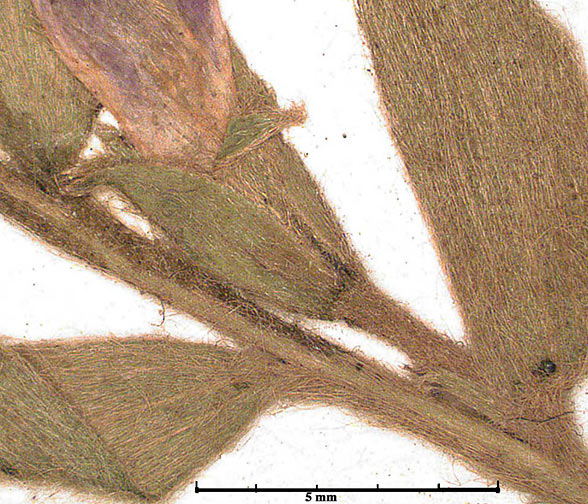
Type specimen of E. oreophilus Greene [NMC] (Sierra Co., NM). Note the palmate veins at the leaf base, distinctive for E. sericeus.
[Click to enlarge]
Plant Resources Center Home Page — Flora of Texas
— Evolvulus



